2021 Russian Winter Balloon Race (long jump)
By Ilona Gizatullina (RUS), Member Ground Headquarters and flymonitor.ru Team
Location
Nizhny Novgorod (NN or Nizhny) is a city in central Russia that celebrated its 800th anniversary during 2021. Nizhny is located approx. 403 km. east of Moscow. The city is situated at the confluence of two rivers, Volga and Oka, which is called “Strelka” (The Arrow). This is the main natural attraction in the historical center of Nizhny Novgorod.

Early Ballooning History
The first Nizhny Novgorod Hot Air Balloon Festival was organized here in summer 1997.
Then in March 2002, for the first time in Russian hot air ballooning history, a group of aeronauts, wishing to compete in the "Long jump"-style event (distance and duration during daylight hours) took off from here.
Moscow residents achieved the best results out of the six participants. The farthest flight was made by Sergei Bazhenov - 342.5 km. The longest flight– by Leonid Tyukhtyaev (future world record holder) - 10 hours 57 minutes.
The first SharNN Challenge Cup
Then there was a long break. Finally, in February 2018, thanks to the head of the SharNN ballooning club, Georgy Zimenko, a winter hot air balloon race took place.
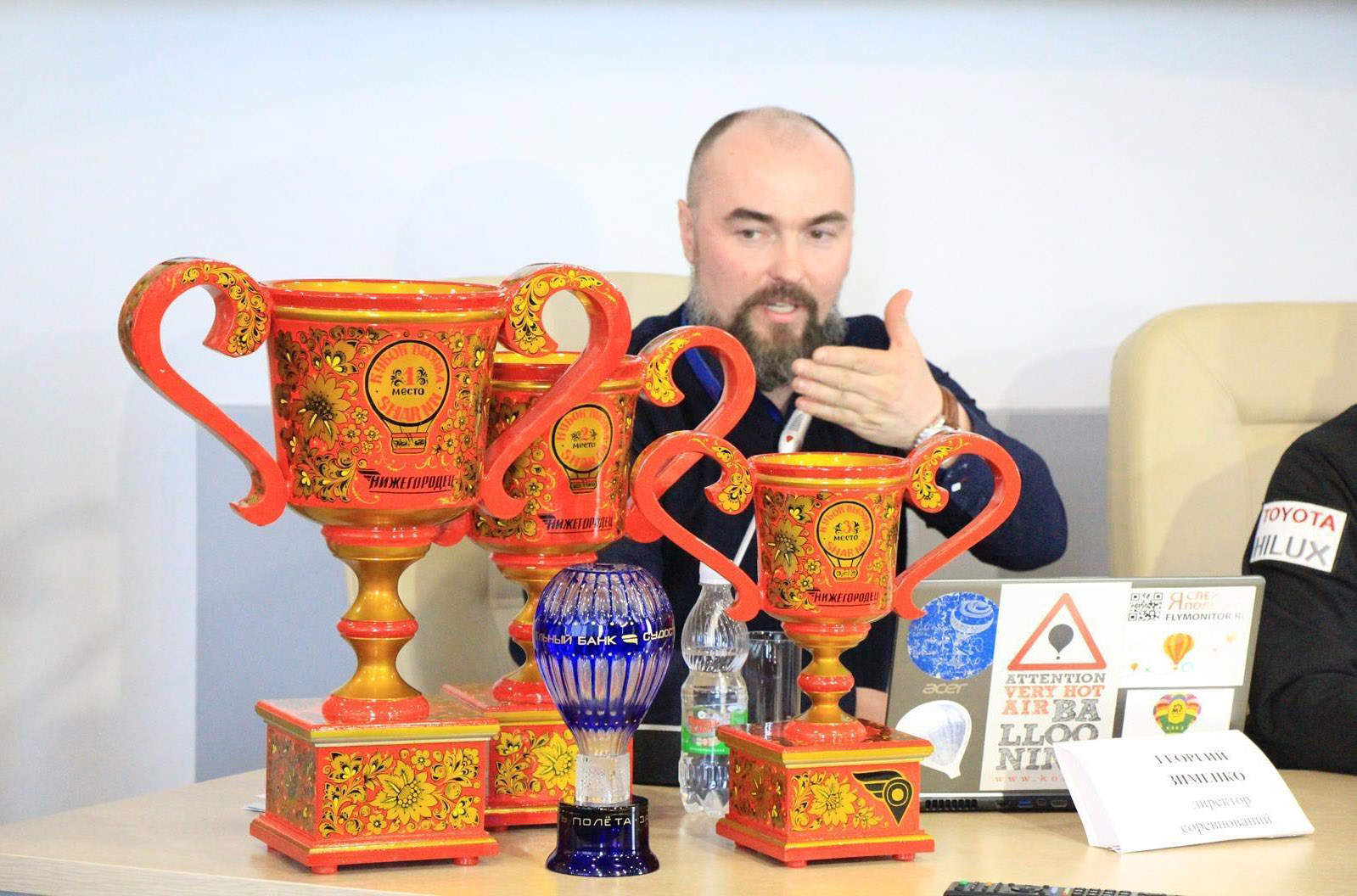
Photo by Ekaterina Zolina
This event served to popularize record flights and inspired balloon pilots to challenge themselves, to strengthen their fortitude and to test their physical and mental capabilities.
Eight crews made plans to fly as far as possible in 10 hours - from dawn to dusk. The pilots were between 30 and 80 years old. Four Russian regions and Armenia were represented.
At the start the temperature was -20°C. The pilots were fully insulated.

Photo by Nikolay Ryabtsev
All procedures for setting records were carried out: envelope examinations, device sealing, fixing the start time...
About 7:00 AM, the balloons took off into the sky. The retrieve teams rushed after them.

Photo by Nikolay Ryabtsev
Everyone flew and drove almost side-by-side. After ten hours and three hundred kilometers, the pilots landed. Each of them set their own personal records in the distance and duration of the flight.
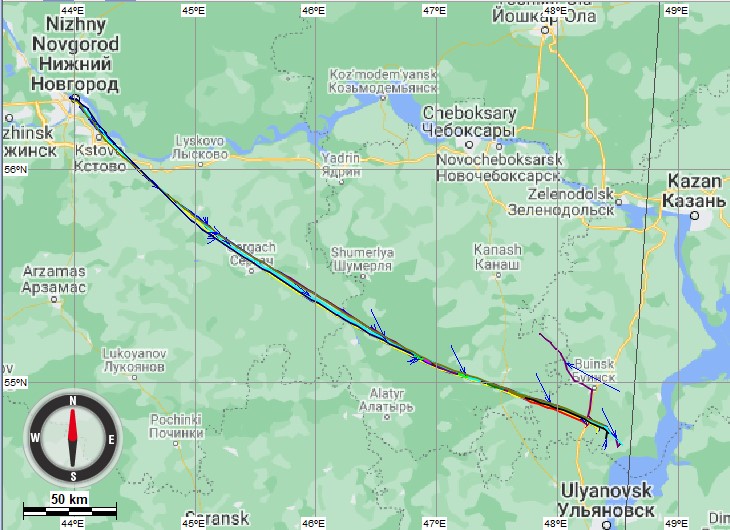
It became clear that the water you took on the flight could completely turn into ice. That the name of the village you said to the retrieve team as a landmark could take them away to a completely different republic. That the fuel in the car, in the excitement of the race, could run out at the most inappropriate moment. That throwing a piball and tracking it by theodolite in the frosty air was unrealistic because of the haze - it is a waste of human and material resources...
The second SharNN Challenge Cup
Taking into consideration all the lessons of the first race, we approached the time for the second, which took place in early March 2019.
Prizes were again in the corporate style, the original Slavic painting - Khokhloma.
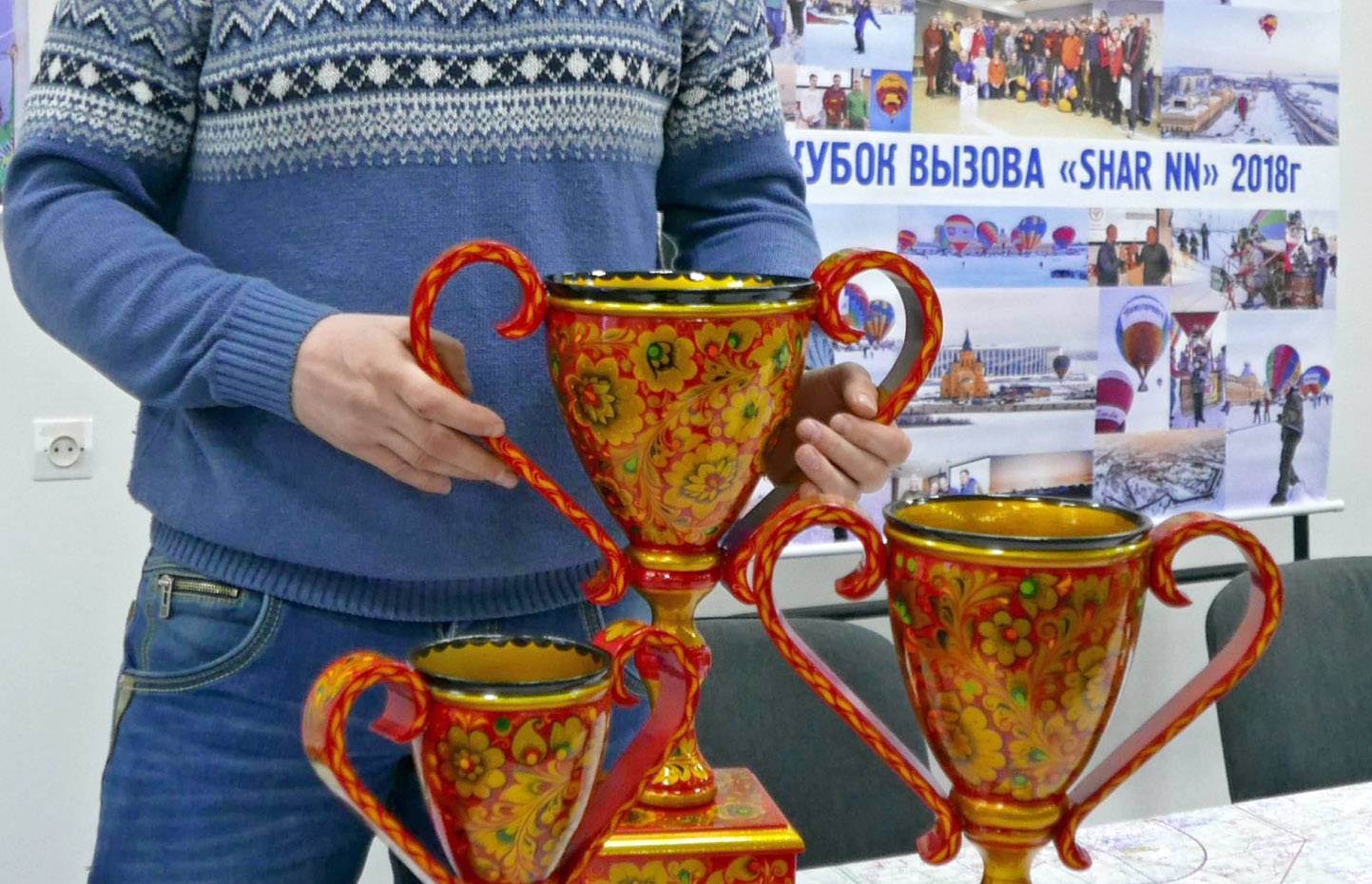
Photo by Ekaterina Zolina
This time, Iridium satellite trackers were given to each pilot (plus to snowmobiles used for tracking) for constant monitoring of balloon locations. Spectators could watch the race, and the www.flymonitor.ru website continuously calculated the approximate distances covered.
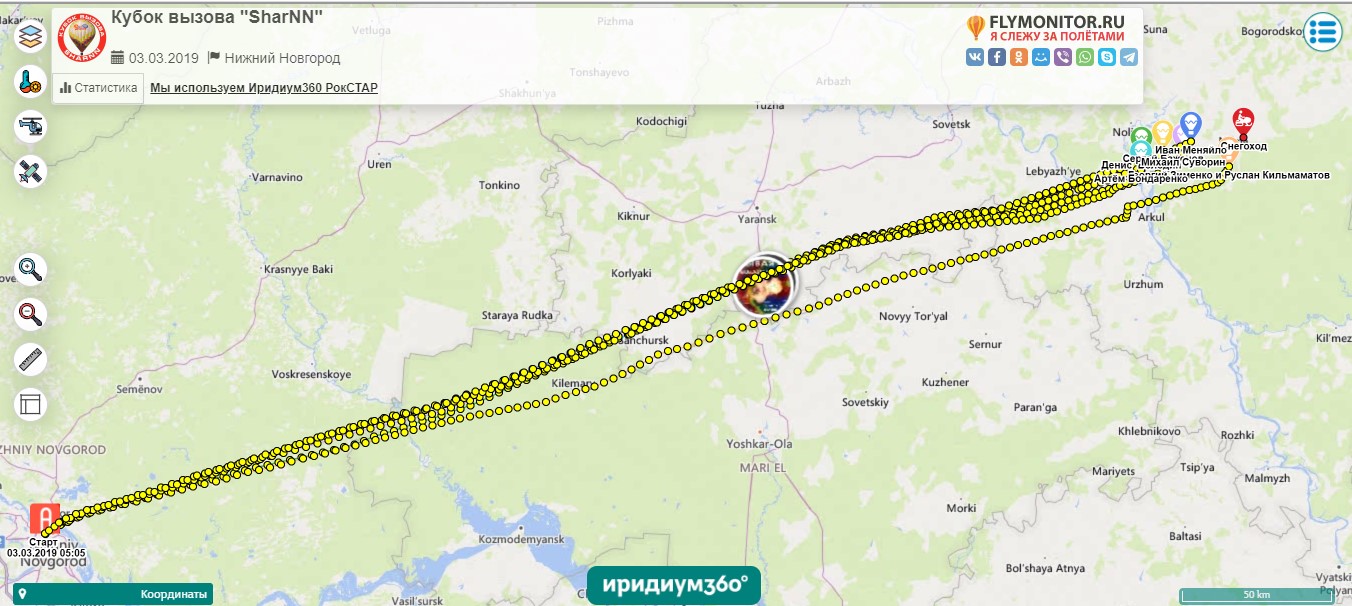
During this race, three pilots surpassed the 400 km mark.
We realized that technical setup is very important. That the gas at the gas station could be “summer-type” (that is, at low temperatures you would not get the required power for the burner flame). That it was not enough to prepare food for yourself for the flight, you had also to remember to take it with you...
The third SharNN Challenge Cup
2020 begins. The situation with the coronavirus was not very clear. But Georgy Zimenko continued to fulfill his dream - to make the Nizhny Novgorod winter race an annual one.
Ten crews arrived in Nizhny Novgorod, two of them were female (each of them would finish the race with a Russian record), and one was from Armenia (who would take the first-place prize).

Photo by Sergey Domeni
This time, two crews surpassed the 500 km mark after about a 10-hour flight. The retrieve vehicles traveled more than 700 km one way.
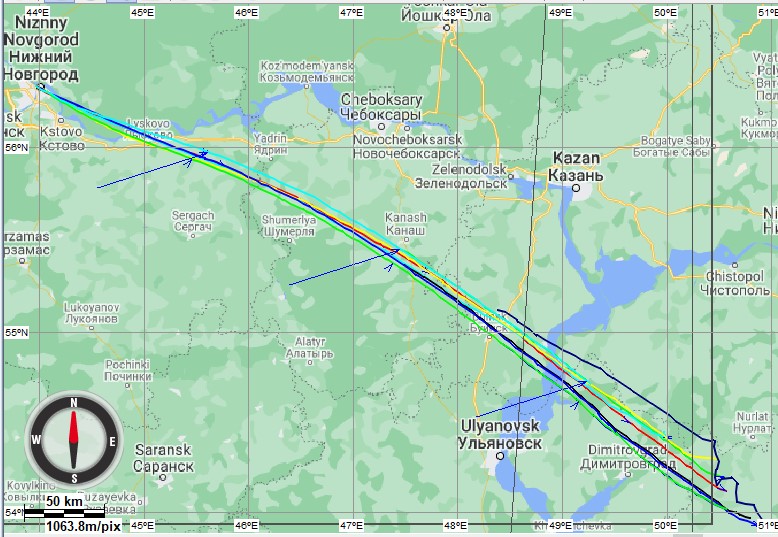
Once again, we made sure that all equipment was checked and prepared for operation at low temperatures. And we found that it is unnecessary (and sometimes even harmful) for the Ground Headquarters team to accompany the participants during the flight while driving their vehicle.
The fourth SharNN Challenge Cup
The 2020 non-competition year dragged on for a long time. The year 2021 has come, frosts have come down to -40°C. There was a choice - to fly in frosty weather and at good speeds or to take pity for people and equipment and arrange a small race.
Every day the start of the race was pushed further and further. The forecasts were showing different directions, including directly to the restricted areas (since there were airports and industrial zones along the route of the possible flight)...

Finally, it seemed that everything worked out on March 1. There would be good speeds, a clear sky and a calm flight… The crews began to get ready for the journey.
Two days before the scheduled start it started to snow in Nizhny, covering the planned take-off site with a thick layer of fluff. Georgy Zimenko had already begun to lose heart, but a lucky chance brought him together with the people who were able to organize the clearing. This meant the pilots did not have to inflate on a snowy field, blowing the snow into the envelope during inflation, so that later they would be doused with a freezing rain shower from the envelope.
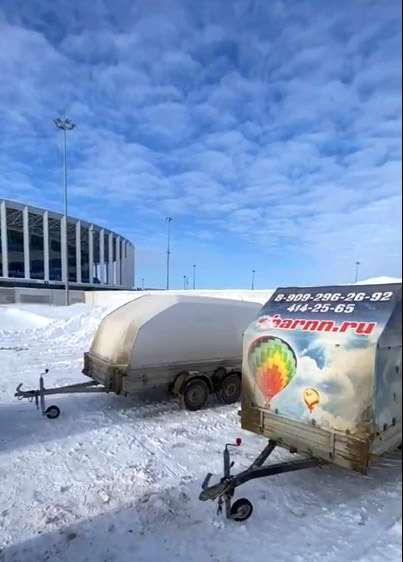
Photo by Georgy Zimenko
A General Briefing took place on the previous evening and special attention was paid to communication with air traffic dispatchers responsible for regulating air traffic in various areas.

Since this time the planned race was not so long (approx.200 km) the organizer suggested an additional task - "key-grab". The coordinates of two targets in the air were given. Landmarks on the ground were objects on the embankment: a boat and the River Terminal spire. Whoever would be the closest would receive a huge, beautiful spoon.
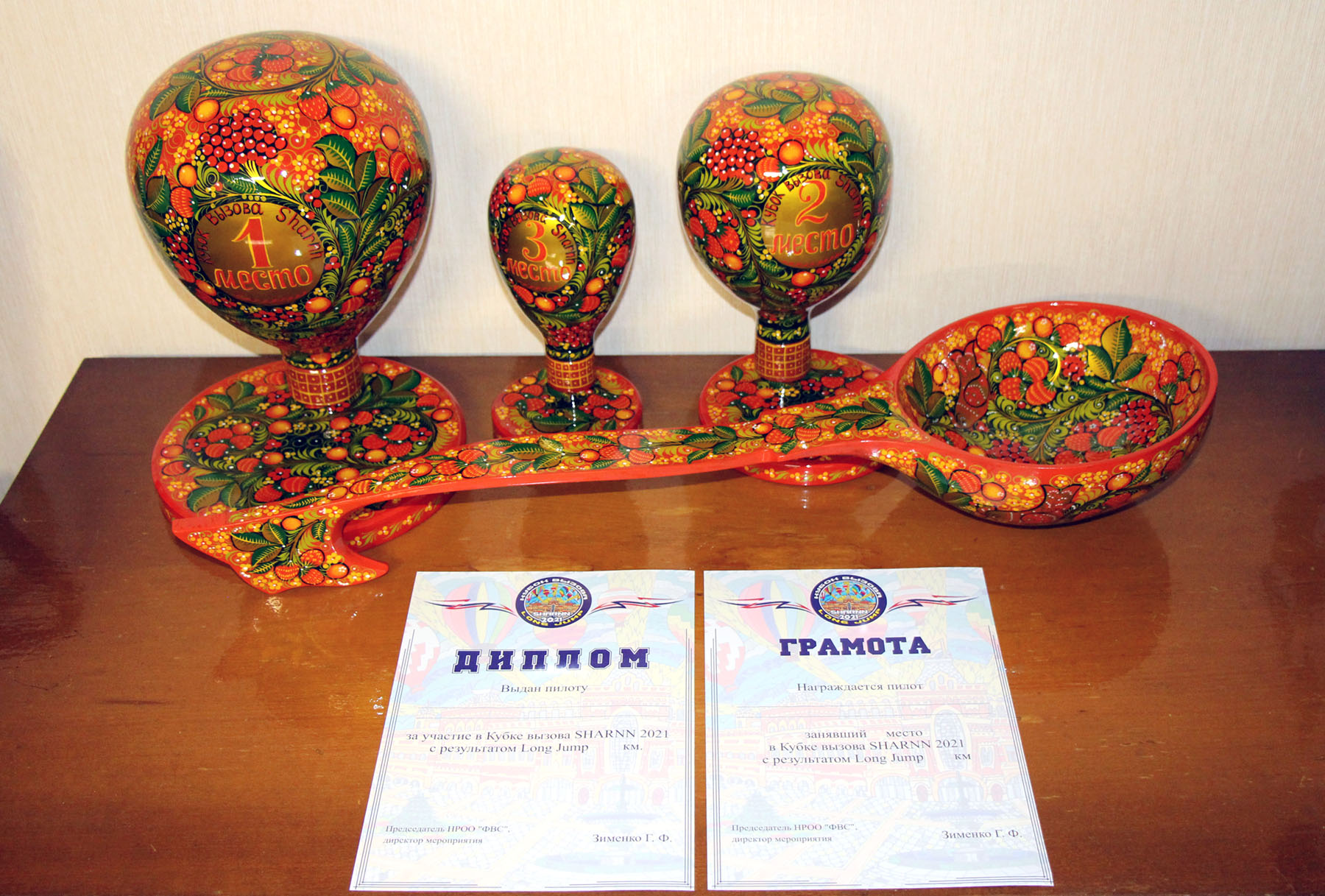
Photo by Sergey Domeni
Six pilots received satellite trackers and three promised to report their coordinates every hour. This kept the organizers in communication with teams to confirm everything was alright with them. And spectators could view and speculate on the race progress.
The flymonitor.ru website traditionally organized tracking with the calculation of in-between distances. But for 2021, the opportunity to test your intuition and guess the winner, for the top three winners or the top five winners had been added.
In the morning we found that during the night the wind had changed direction, and the pilots would not hit the goals.

Photo by Sergey Domeni
Plus the temperature, which was forecast to be about 20 degrees below zero, in fact turned out to be five degrees higher. Not everyone had enough time to recalculate the planned gas consumption, so everyone landed differently.
One pilot landed completely empty:
And another pilot - swearing that extra pounds have to be dragged to the retrieve vehicle:
One pilot found his lost gadgets (a phone, a power bank, and a radio) only when he and his crew returned to the landing site with a metal detector a couple of days later. Follow their adventures here:
Returning to the launch
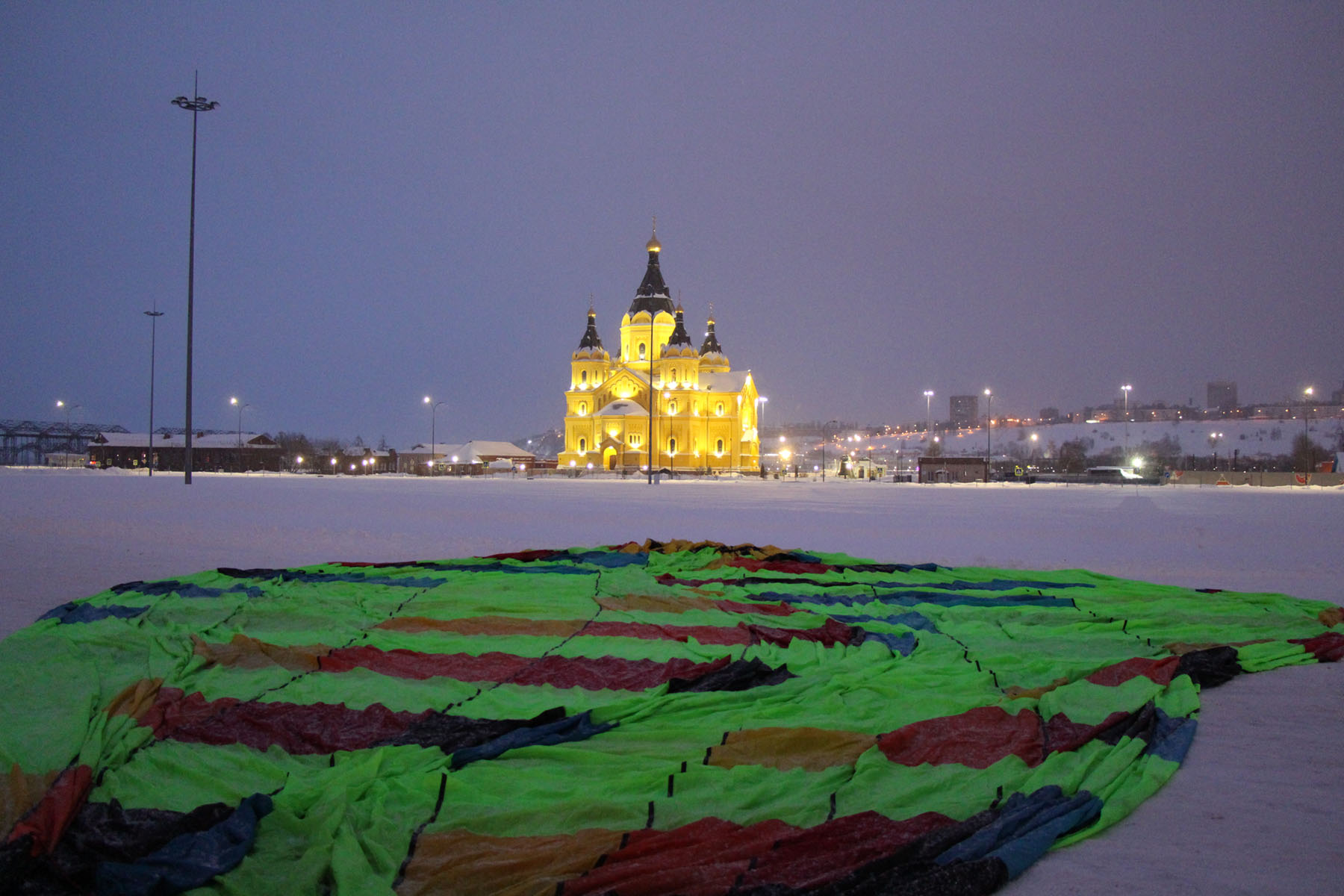
Photo by Sergey Domeni
Unfortunately, the balloons could not fly to the city center, to the Kremlin, but the photos from the Nizhny Novgorod stadium (which hosted the 2018 FIFA World Cup) turned out to be excellent.
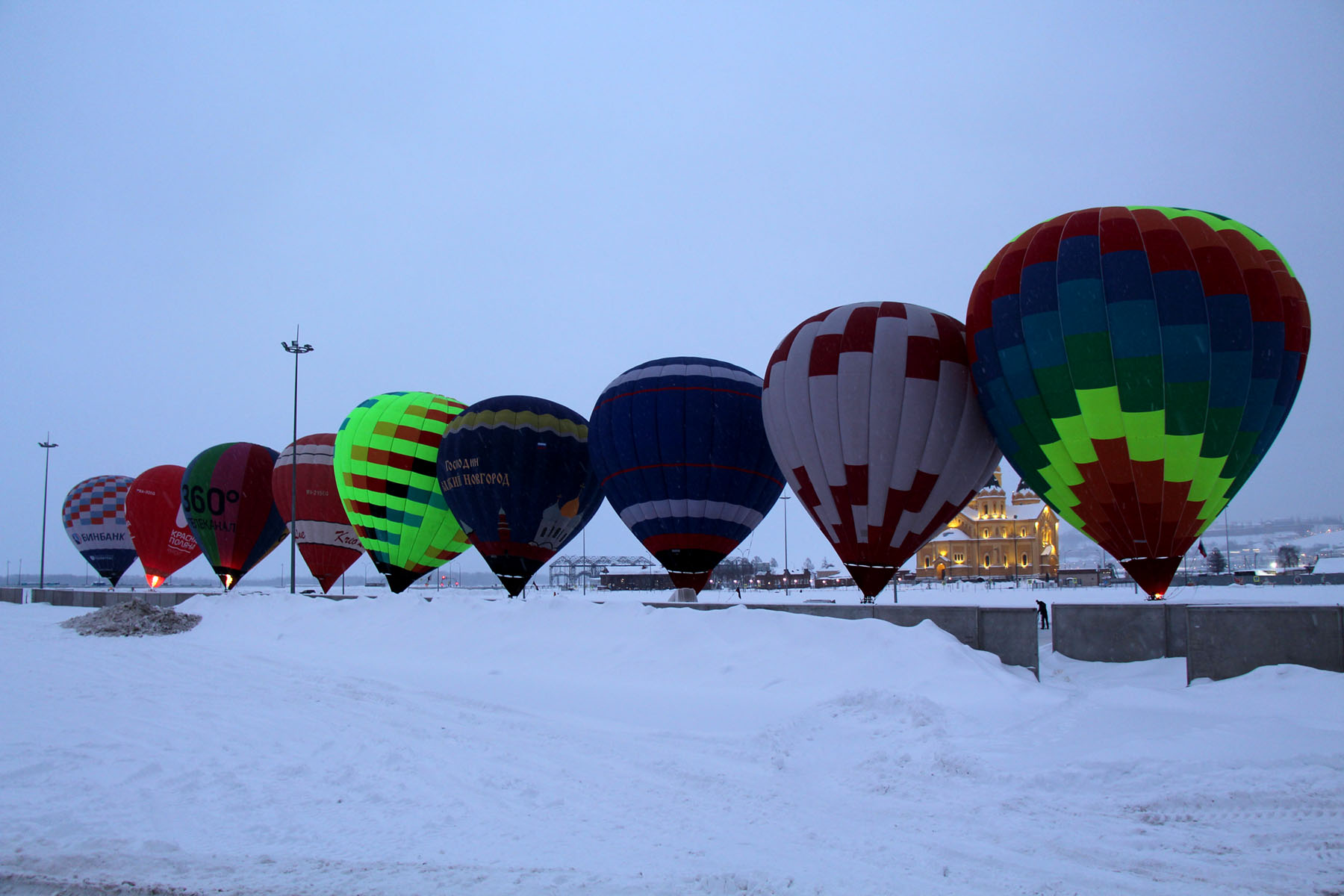
Photo by Sergey Domeni
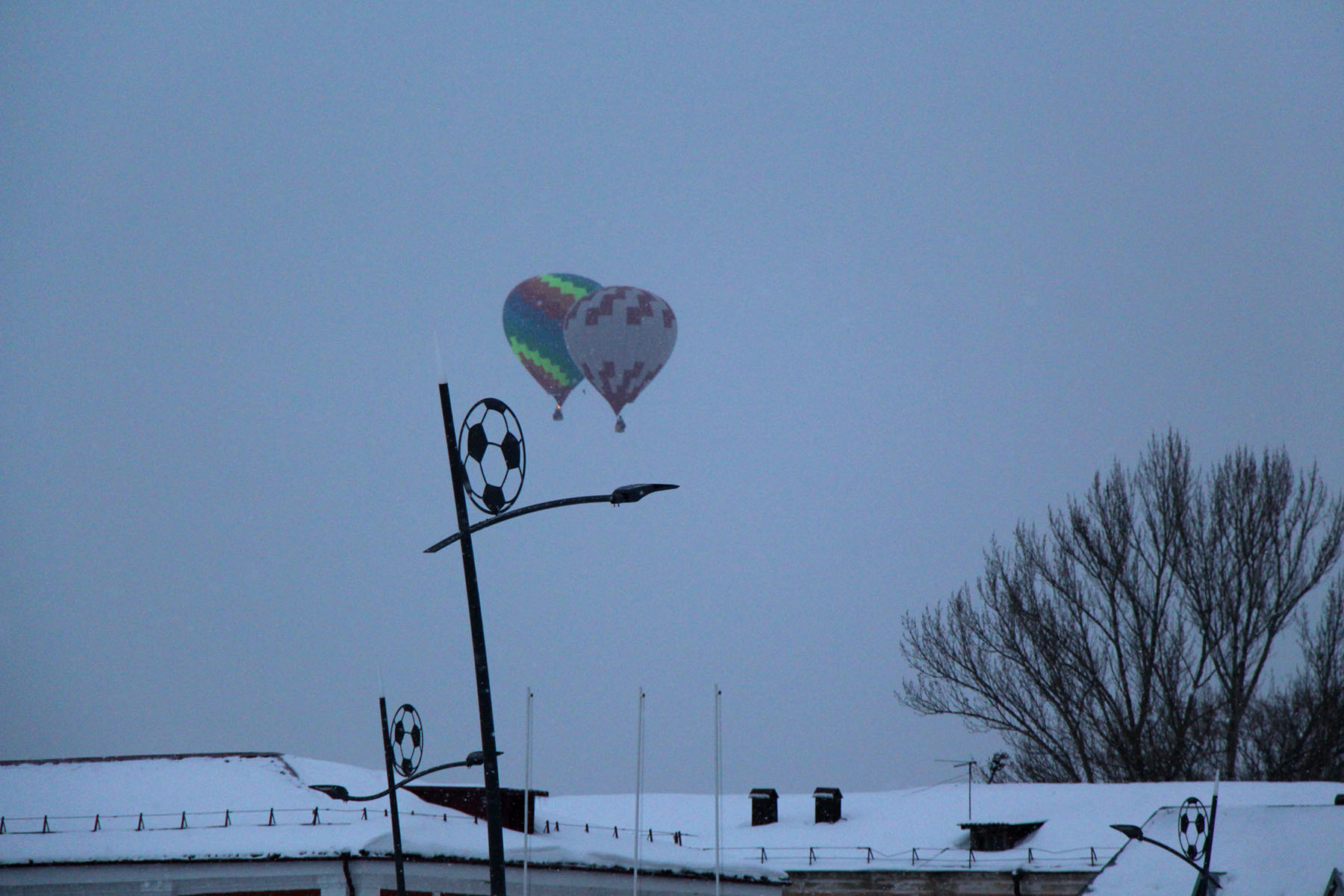
Photo by Sergey Domeni
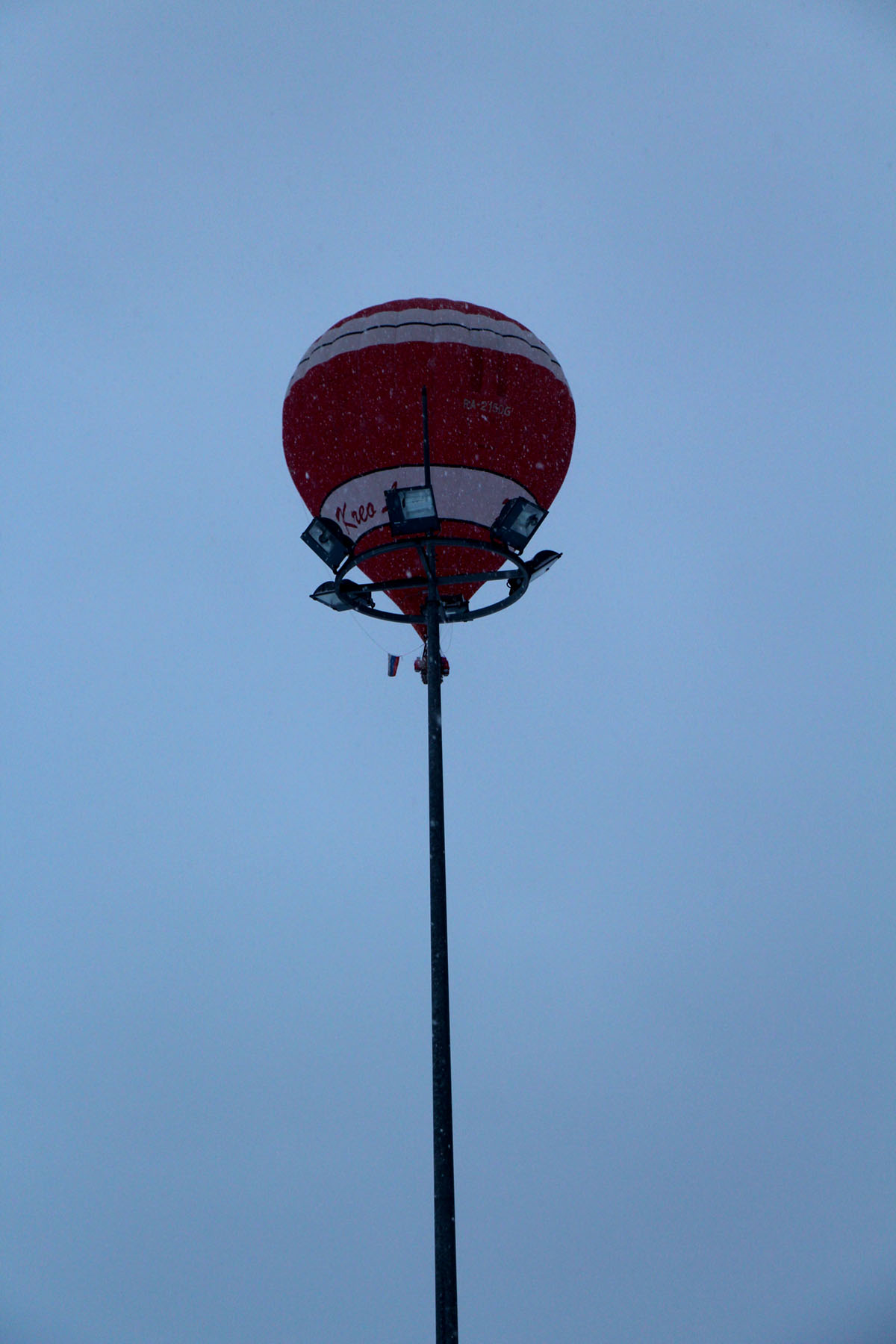
Photo by Sergey Domeni
As you can see on the photos, the sky was covered with clouds during takeoff, and unexpectedly it began to snow. The pilots had to make their way to the sun and to fly part of the way, diving into the upper layer and emerging, because the highest speed was precisely on the upper cloud edge. This added additional stress to the race newbies.

Photo by Andrey Ermolaev
The Ground Headquarters continuously negotiated with the dispatchers, reporting on where the balloons were flying. The spectators watched the race on tracking. The pilots positions were changing continuously, and it was not easy to predict the outcome of the race until the end.
- See the flight graphics. Click on start button on bottom of page to see the progress of flights. Note the second page is in English.
Pilot’s Workplace
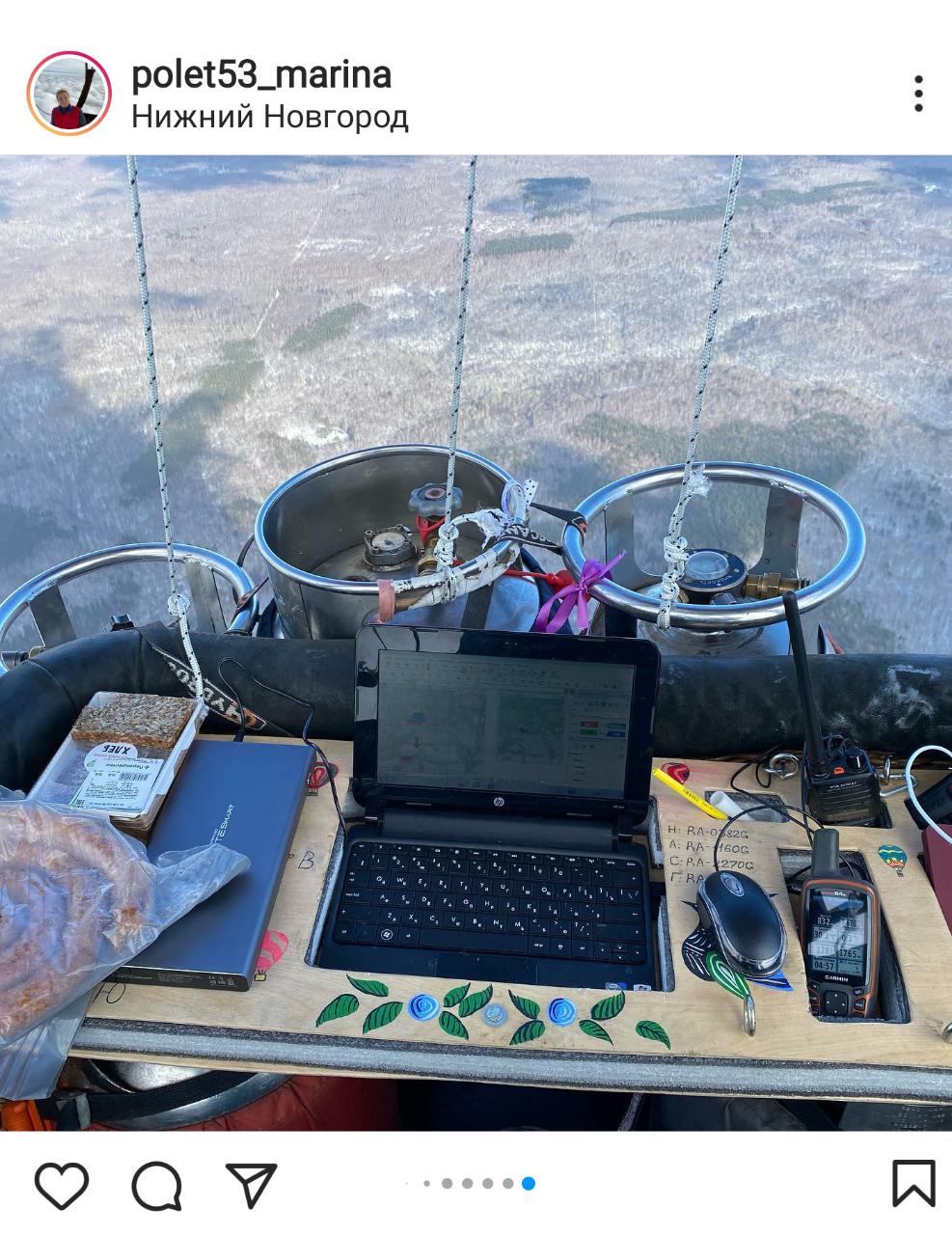
Photo by Marina Fedorova
This is how the pilots’ workplace looked during the flight. Marina Fedorova could have won the race easily if the new/change-of-shift dispatcher had not covered the area of the Saransk airport with a 40-kilometer dome. The dispatchers were waiting for two planes and no one wanted to witness the meeting of the steel bird and our dandelions.
Each team member had its own separate story about landing and retrieve, which will be shared for a long time at friendly gatherings and in social networks. Some teams managed to return to the competition center on the same day. And some only arrived just before the beginning of awards ceremony. Everyone enjoyed sharing their adventures.
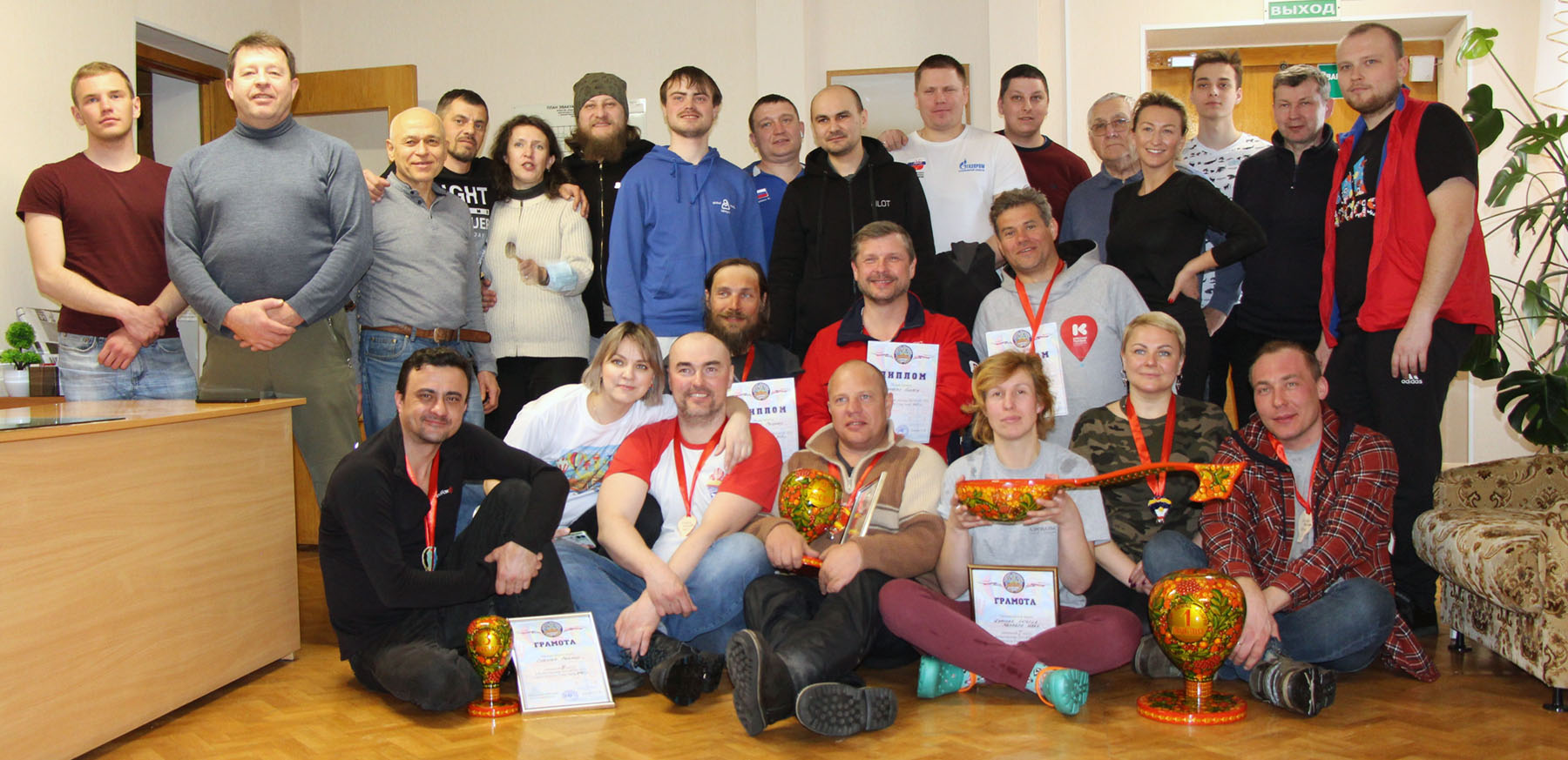
Photo by Sergey Domeni
The Spoon ("key-grab" prize) went to the winners of the race, a mixed male-female crew. They managed to be the closest to the set goal with a result of 400 m. Champagne was poured into this spoon and the prize-winners, Natalia Ivanova, and world record holder Ivan Menyailo, were sprinkled with it as part of the celebration.

Photo by Sergey Domeni
Lessons Learned for next time
We learned that the solar battery on board was very useful. That all pockets should be zipped and devices should be tied tight. That signal smokes at the landing site could attract locals on the snowmobile:
That the airport dispatcher could allow overflight through his zone, and his shiftman could forbid...
And finally - one of the most beautiful videos of the balloons launch, taken from a quadcopter:
See you soon, Nizhny!

